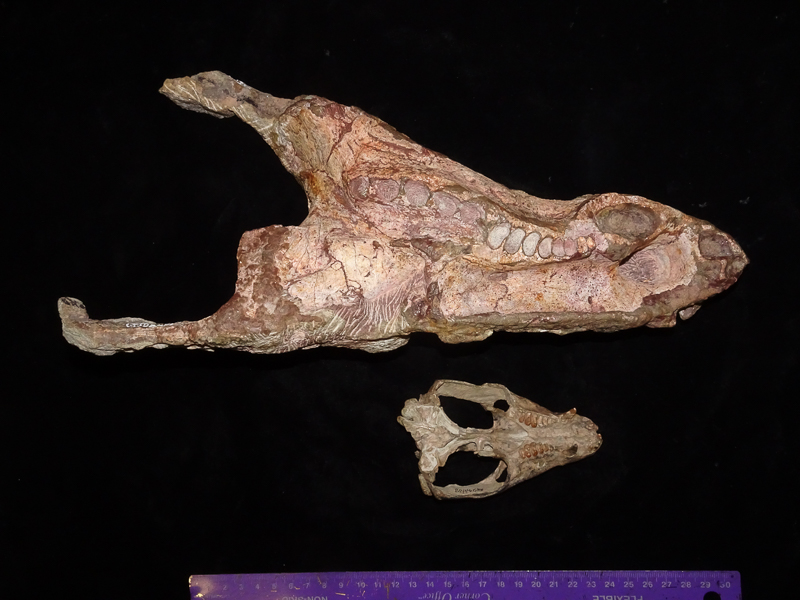Giant protomammal snout reveals new Triassic top predator
For immediate release ‐ July 29, 2021
Contact: Jon Pishney, 919.707.8083. Images available upon request
 The snout of Impidens compared with the complete skull of its much smaller relative Trirachodon. Photo: Dr. Christian Kammerer/NCMNS. Click to enlarge.
The snout of Impidens compared with the complete skull of its much smaller relative Trirachodon. Photo: Dr. Christian Kammerer/NCMNS. Click to enlarge.
New research by scientists from the Evolutionary Studies Institute (Johannesburg, South Africa) and Dr. Christian Kammerer (NCMNS Research Curator of Paleontology) has revealed the existence of a new species of giant, predatory cynodont. Cynodonts are a group of synapsids that include the ancestors of mammals, and were abundant and diverse in terrestrial ecosystems in the Triassic Period (~252–200 million years ago), prior to dinosaurs becoming the dominant form of large-bodied vertebrate life on land.
The new species, Impidens hancoxi (name meaning “Hancox’s combat tooth”, in reference to its powerful dentition and Dr. John Hancox, an expert on Triassic fossils), is known from a partial snout. This specimen was discovered in the Eastern Cape Province of South Africa, near the skull of another animal (Ufudocyclops mukanelai, a beaked plant-eater) previously described by Dr. Kammerer. The closest relatives of Impidens are rat-sized animals, but it would have been as big as a lion, making it the largest known meat-eater from its locality. At a time in the Triassic when reptiles (including the ancestors of dinosaurs and crocodiles) were increasingly occupying top predator roles, Impidens indicates that protomammals were still forces to be reckoned with in their habitats.
For more information about our upcoming activities, conservation news and ground-breaking research, follow @NaturalSciences on Instagram, Twitter and Facebook. Join the conversation with #visitNCMNS.

